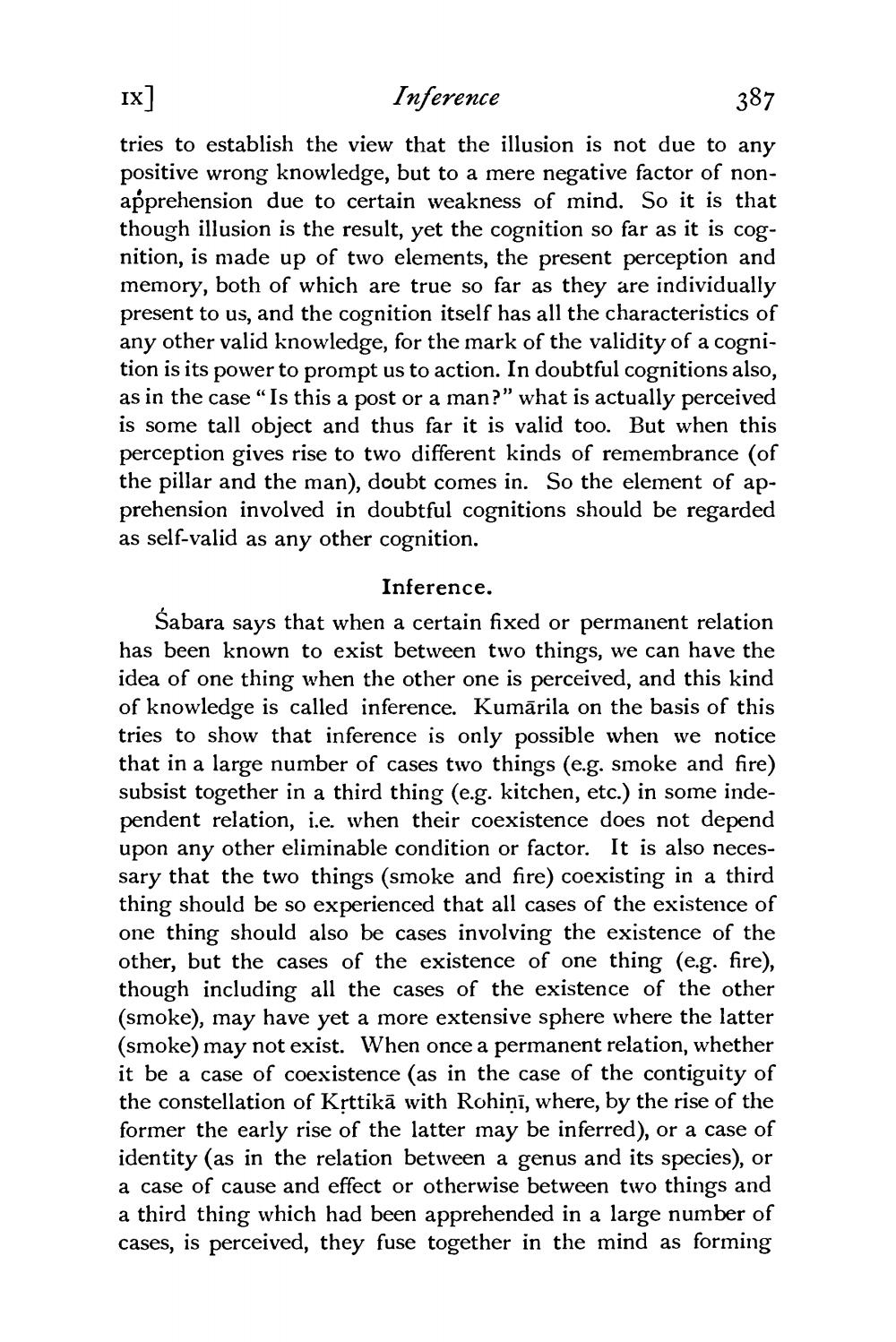________________
区
IX]
Inference
387
tries to establish the view that the illusion is not due to any positive wrong knowledge, but to a mere negative factor of nonapprehension due to certain weakness of mind. So it is that though illusion is the result, yet the cognition so far as it is cognition, is made up of two elements, the present perception and memory, both of which are true so far as they are individually present to us, and the cognition itself has all the characteristics of any other valid knowledge, for the mark of the validity of a cognition is its power to prompt us to action. In doubtful cognitions also, as in the case "Is this a post or a man?" what is actually perceived is some tall object and thus far it is valid too. But when this perception gives rise to two different kinds of remembrance (of the pillar and the man), doubt comes in. So the element of apprehension involved in doubtful cognitions should be regarded as self-valid as any other cognition.
Inference.
Śabara says that when a certain fixed or permanent relation has been known to exist between two things, we can have the idea of one thing when the other one is perceived, and this kind of knowledge is called inference. Kumārila on the basis of this tries to show that inference is only possible when we notice that in a large number of cases two things (e.g. smoke and fire) subsist together in a third thing (e.g. kitchen, etc.) in some independent relation, i.e. when their coexistence does not depend upon any other eliminable condition or factor. It is also necessary that the two things (smoke and fire) coexisting in a third thing should be so experienced that all cases of the existence of one thing should also be cases involving the existence of the other, but the cases of the existence of one thing (e.g. fire), though including all the cases of the existence of the other (smoke), may have yet a more extensive sphere where the latter (smoke) may not exist. When once a permanent relation, whether it be a case of coexistence (as in the case of the contiguity of the constellation of Kṛttika with Rohini, where, by the rise of the former the early rise of the latter may be inferred), or a case of identity (as in the relation between a genus and its species), or a case of cause and effect or otherwise between two things and a third thing which had been apprehended in a large number of cases, is perceived, they fuse together in the mind as forming




